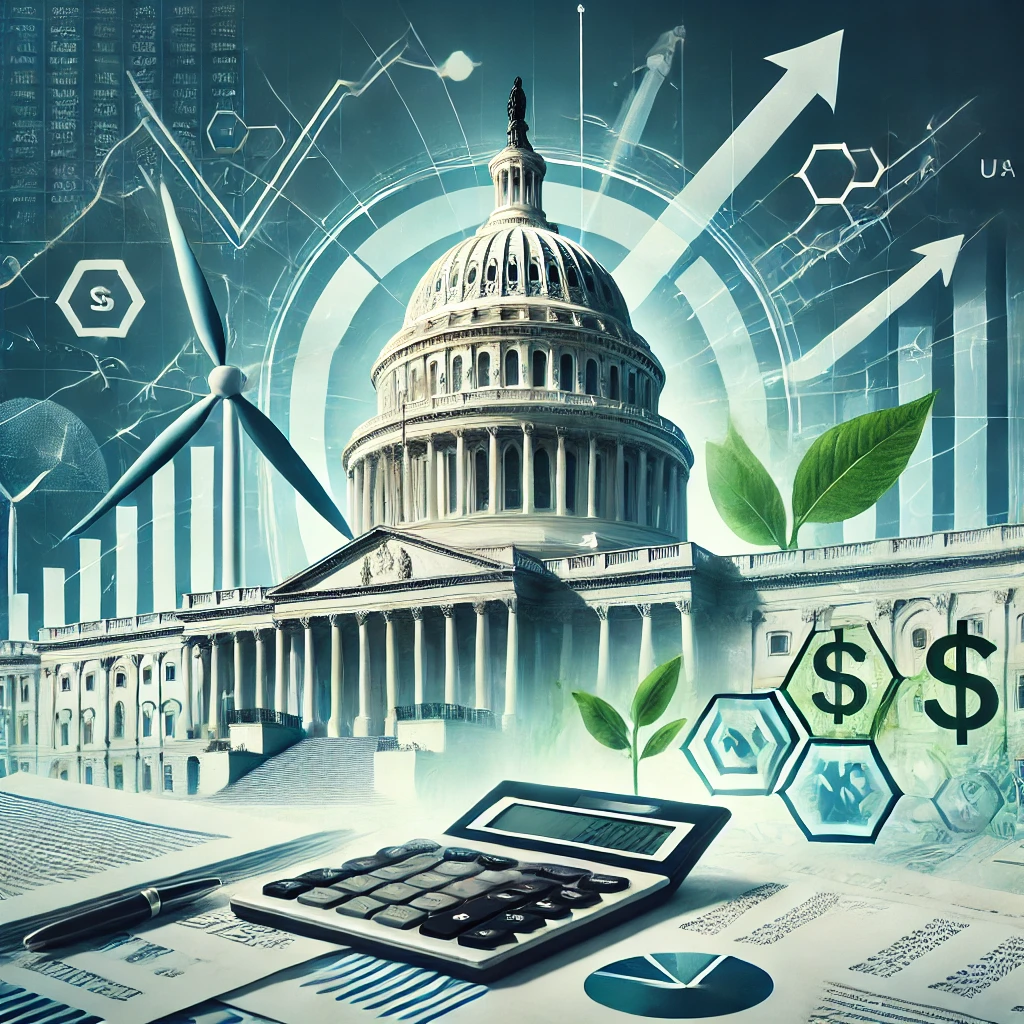
Executive Summary
The 2024 US elections have set the stage for significant shifts in the tax landscape, reflecting the political priorities and economic strategies of the new administration. This white paper examines the potential impacts on federal, state, and local tax policies, offering insights into how businesses and individuals can navigate these changes. From corporate taxation and individual income tax rates to global tax reform and emerging green incentives, this analysis provides a detailed view of the future tax environment in the United States.
Introduction: Setting the Stage
The outcome of the 2024 elections has reinvigorated debates on taxation, with both policymakers and stakeholders acknowledging the need for a balanced approach to revenue generation and economic growth. The primary areas of focus include:
- Addressing federal deficits and debt sustainability.
- Promoting economic equity through progressive taxation.
- Incentivizing domestic investment and innovation.
- Aligning US tax policy with global initiatives, such as OECD’s Pillar Two reforms.
Key Areas of Change in the Post-2024 Tax Landscape
- Corporate Taxation
- Rate Adjustments: The new administration has proposed altering corporate tax rates to balance revenue needs with competitiveness. Current discussions include raising the corporate tax rate from 21% to 25%, potentially impacting multinational companies and domestic corporations alike.
- R&D Incentives: Efforts to foster innovation may lead to enhanced tax credits for research and development, targeting high-growth sectors like technology and clean energy.
- Minimum Tax on Book Income: Following trends from the Inflation Reduction Act of 2022, additional scrutiny on large corporations’ book profits may result in broader minimum tax requirements.
- Global Tax Compliance: The US remains committed to implementing OECD’s global minimum tax framework, aiming to prevent profit shifting and tax base erosion.
- Individual Income Tax
- Marginal Rate Changes: Proposed increases in top marginal rates for high-income earners may rise from the current 37% to 39.6%, coupled with adjustments to capital gains taxation.
- Expansion of Tax Credits: Policies to support middle-class families are expected to expand child tax credits, education incentives, and health-related deductions.
- Retirement Savings: New measures may provide greater flexibility for retirement contributions, aiming to bolster financial security for aging Americans.
- State and Local Tax (SALT) Deductions
- With the SALT cap of $10,000 set to expire in 2025, there is renewed bipartisan interest in either reforming or repealing the cap, which significantly impacts taxpayers in high-tax states.
- Green Tax Incentives
- To support the transition to a low-carbon economy, expect enhanced credits for renewable energy investments, electric vehicle adoption, and energy-efficient property development.
- Wealth and Estate Taxation
- Wealth Taxes: Discussions around taxing unrealized capital gains and implementing new wealth taxes are gaining traction.
- Estate Tax Adjustments: Current exemptions are likely to be reduced, rolling back the historically high thresholds introduced under the Tax Cuts and Jobs Act (TCJA).
Global Tax Integration: The OECD Influence
The OECD’s tax reform initiatives are expected to shape US tax policy significantly. The administration’s commitment to the 15% global minimum tax underscores the need for alignment with international norms, particularly as the US seeks to maintain its leadership role in global trade and investment.
Sectoral Implications
- Technology
- Higher taxes on intangible assets and stricter rules for global profit allocation will affect tech giants, requiring reevaluation of global tax strategies.
- Energy
- Oil and gas companies may face new levies or reduced incentives, while renewable energy firms could see expanded benefits under green tax initiatives.
- Healthcare
- Proposals to expand deductions and credits for healthcare expenses will influence the healthcare industry, particularly insurers and pharmaceutical companies.
- Real Estate
- Enhanced credits for energy-efficient properties may spur growth, but potential restrictions on 1031 exchanges could affect investment strategies.
Strategic Recommendations
- For Businesses
- Conduct comprehensive tax planning to mitigate exposure to higher corporate rates and align with global minimum tax standards.
- Maximize available credits and deductions, particularly in green initiatives and R&D.
- For Individuals
- Leverage retirement and education savings incentives to offset potential increases in income and capital gains taxes.
- Explore estate planning strategies to prepare for possible reductions in exemption thresholds.
- For Policymakers
- Maintain a balanced approach to ensure fiscal responsibility without stifling economic growth.
- Prioritize transparency and stakeholder engagement to build trust in the tax reform process.
Conclusion
The post-2024 US tax landscape presents a mix of opportunities and challenges. Businesses and individuals alike must adopt proactive strategies to navigate the evolving environment. By leveraging available resources and staying informed, taxpayers can adapt to new policies while contributing to economic resilience and growth.
References
- US Department of the Treasury Reports.
- OECD Guidelines on Global Minimum Tax.
- Congressional Budget Office (CBO) Projections.
- Tax Policy Center Analyses.
#MavinsInsights #TaxPolicy #USTaxReform #PostElectionAnalysis #GlobalTax #GreenIncentives #EconomicGrowth #BusinessStrategy #WealthManagement #FiscalResponsibility
